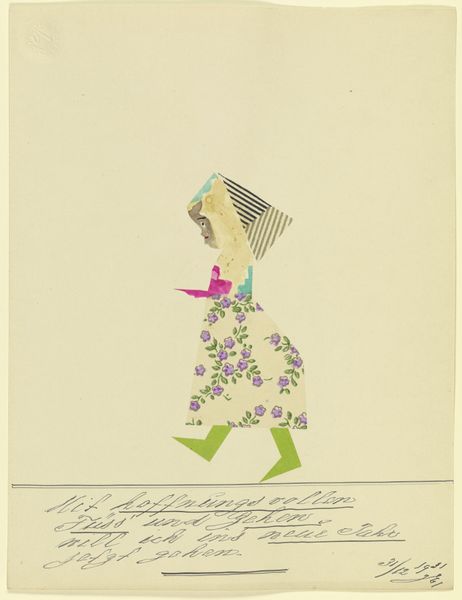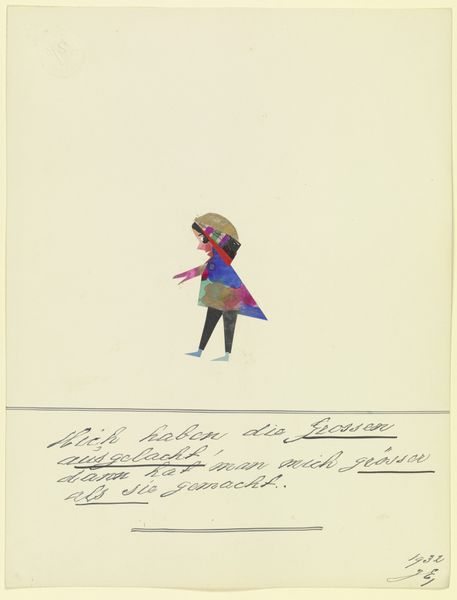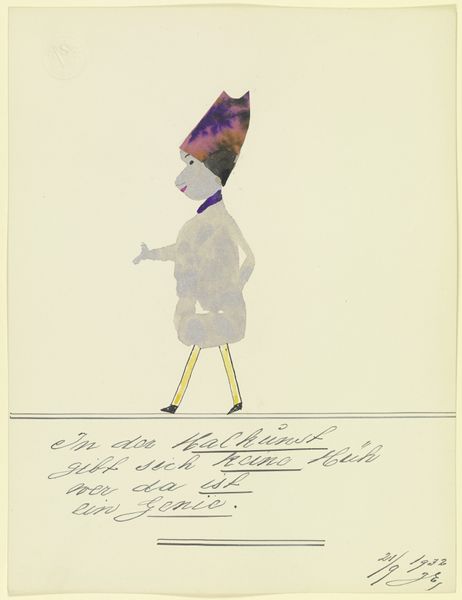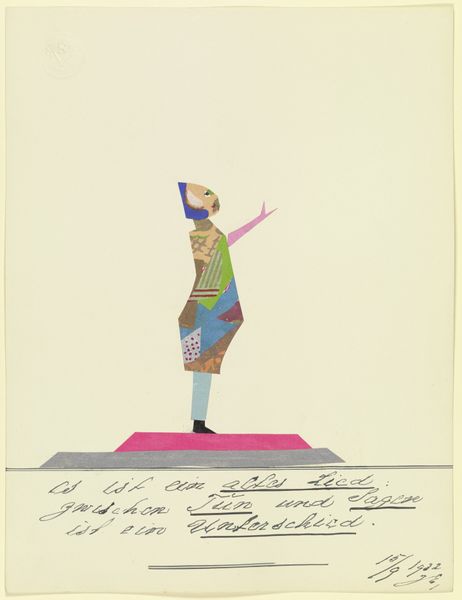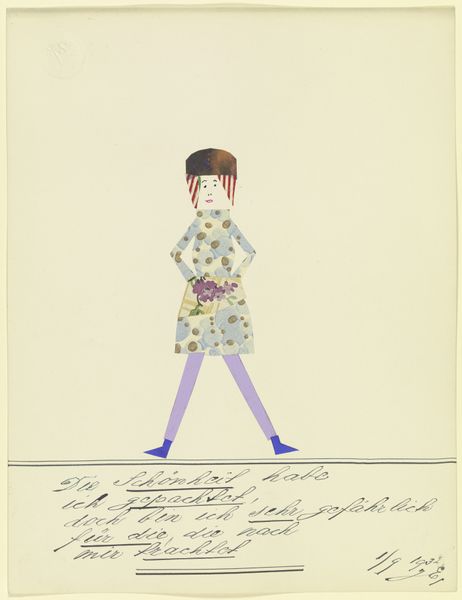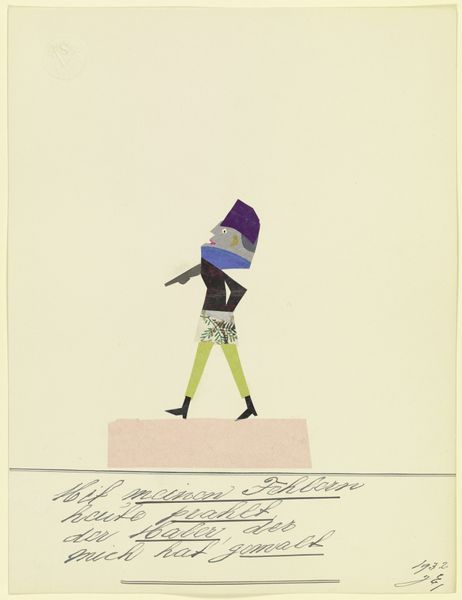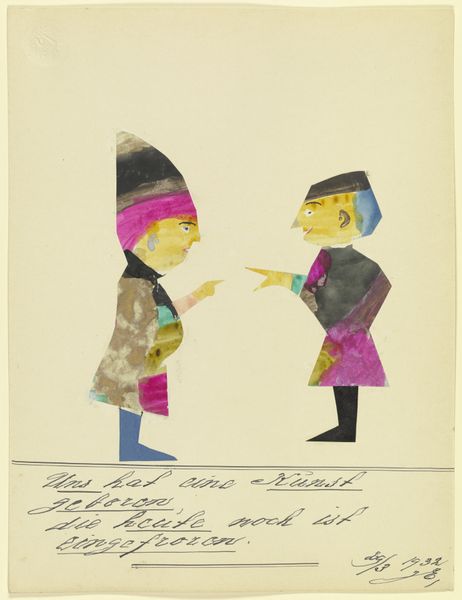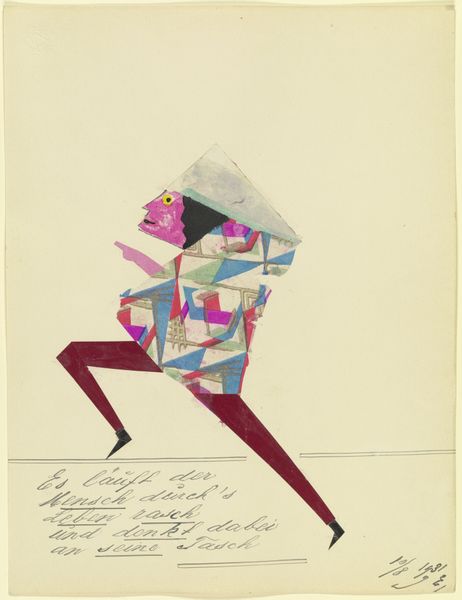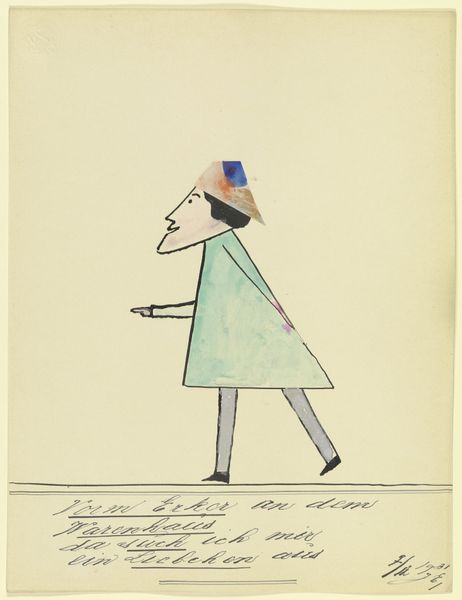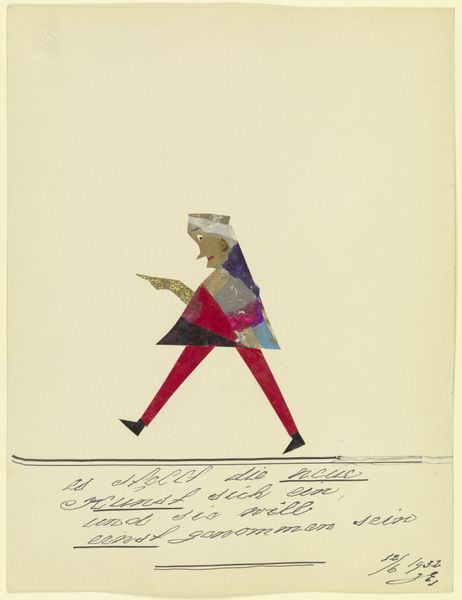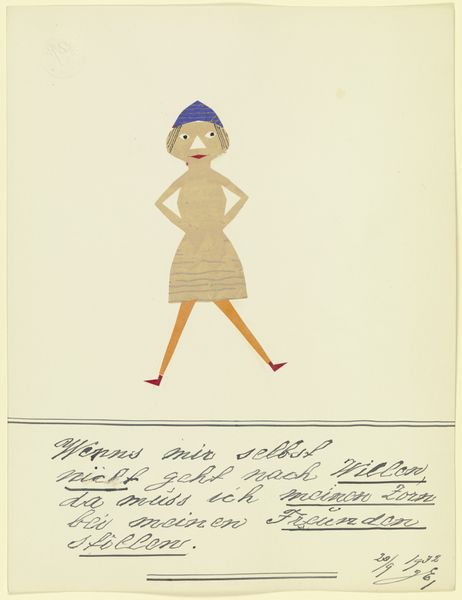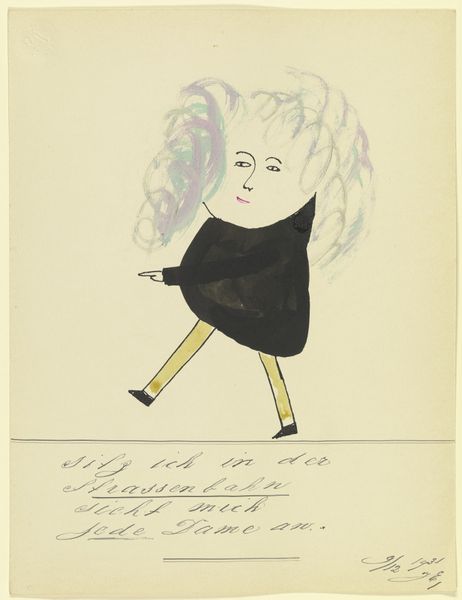
drawing, collage, gouache, paper, ink
#
drawing
#
collage
#
gouache
#
figuration
#
paper
#
ink
#
abstraction
Copyright: Public Domain
Editor: This is John Elsas's 1932 mixed media collage, "17224 (\u201eVom richtig denkenden Bauermann \u2026\u201c)." The figure has a childlike quality to it. What do you see in this piece, considering its historical moment? Curator: Well, immediately, I consider the rise of oppressive regimes in 1930s Europe. Elsas, whose real name was John Höxter, lived in Frankfurt. This piece, with its seemingly naive aesthetic, feels like a coded commentary. How might its playful appearance function as a form of resistance? Editor: Resistance? The figure almost seems clownish with its hat and wide stance. Curator: Precisely. By adopting this deliberately unsophisticated style, Elsas critiques the dominant, often rigid, artistic and political structures of the time. This echoes the strategies of the Dada movement, which weaponized absurdity. Where do you think he found the source texts he included in this piece? Editor: Good question. His expressionistic use of colour contrasts the flat areas of colour, it could perhaps suggest he wanted to convey childlike optimism? Curator: Interesting idea, especially juxtaposed to the handwritten text below, and the fragmented identity of the figure that can be constructed of different coloured papers and drawing styles. The gouache and ink evoke vulnerability but, I suggest that, his collage is a subtle act of defiance against conformity and oppression that serves to reflect the need to hold tight to such things under periods of upheaval. Editor: It is incredible to think this artist captured so much history within the one work, such a mix of abstract, childlike qualities that reveal such resistance is impressive! Curator: And highlights how art can become a critical tool for socio-political reflection, especially when more overt forms of expression are silenced.
Comments
No comments
Be the first to comment and join the conversation on the ultimate creative platform.
